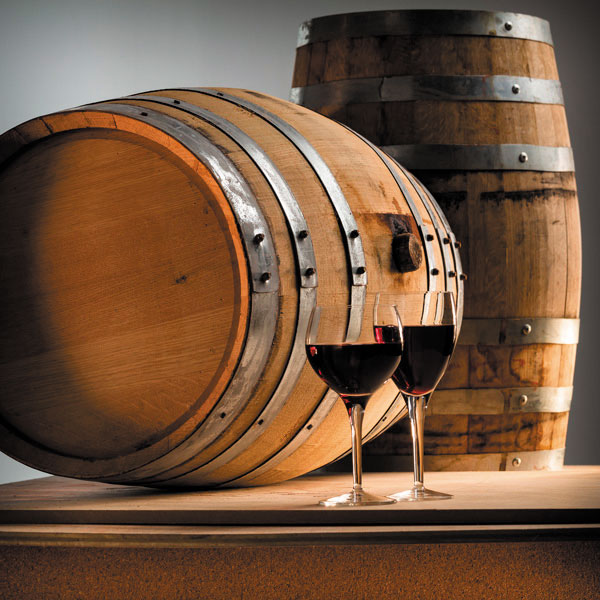Well, the first thing I always say is, “A full barrel is a happy barrel.” That means that the barrel is best stored with wine in it! The acidity of the wine (generally reds tend to be a pH of 3.5–3.8-ish) keeps spoilage microbes at bay and of course the wetness of the wine keeps the wood nice and swollen. For those times when we can’t keep our barrels full of wine, however, we do need to have a backup plan. This is where a good barrel storage solution comes in.

Basically, what you’re going to do is fill your barrel with an acidulated sulfur dioxide solution, which mimics the above salubrious effects — don’t attempt to drink it, however! Here’s the recipe to keep one barrel:
-180 g of citric acid
-160 g of potassium metabisulfite (KMBS) powder
-Enough water to fill the barrel
Procedure: Fill your barrel about halfway with water. If possible, use a carbon-block filter to remove the chlorine from the water, as chlorine can contribute to TCA, or the “corked” aroma defect, which could infiltrate your barrel. The water could be warm or cold, but warm water will help the chemicals dissolve faster and more thoroughly. Do not use hot water, which will cause the sulfur dioxide in the KMBS powder to volatilize and potentially not only burn your nose-hairs off but also to dissipate more quickly. Put on a respirator that has cartridges that are NIOSH-approved for sulfur dioxide gas as well as eye protection. Dissolve the citric acid in about a gallon (4 L) of warm water and add to the half-full barrel. With your barrel-stirrer (you have one of those, right?) or a long dowel or rod, mix the solution into the water. By the way, you can use tartaric acid too, it’s just much more expensive than citric acid. Continue filling the barrel until it’s about ¾ of the way full. Then dissolve the KMBS powder into about a gallon (4 L) of water (warm water is OK here, just not hot), and add to the barrel, again mixing thoroughly. Completely top up the barrel with water. Top with a wooden bung or a bung you don’t care about ruining, as strong sulfur dioxide solutions (KMBS is 57.6% sulfur dioxide), liquid or gas, will degrade and crack silicone bungs over time. Another cellar trick is to cover your bung with plastic wrap before sealing up the barrel.
For those times when we can’t keep our barrels full of wine, however, we do need to have a backup plan.
Practice good safety techniques at all times around sulfur dioxide, especially when acids and sulfur dioxide mix. SO₂ is much more effective at lower pHs, which is what you want, but that also renders it more volatile and dangerous. Flush any spills with plenty of clean water and don’t allow any un-masked people or your pets in the area while you’re working. By keeping your barrel filled with the above solution and by changing it out every one to two months, you should be able to keep your barrel sound and sweet when you don’t have wine in it. However, the best way to keep a barrel going is to keep it full of your aging wine . . . and to address one of your other comments, indeed after four batches of wine I would expect the barrel to not be contributing much flavor or aroma to the wine.
This is where I really like to add oak beans, sticks, or spirals to my wine in barrels. You get the benefit of the aging dynamics of the barrel and can add some more fresh wood for further flavor and aroma development. You can read about my recommended products here: https://winemakermag.com/wine-wizard/is-oak-sanitation-necessary




